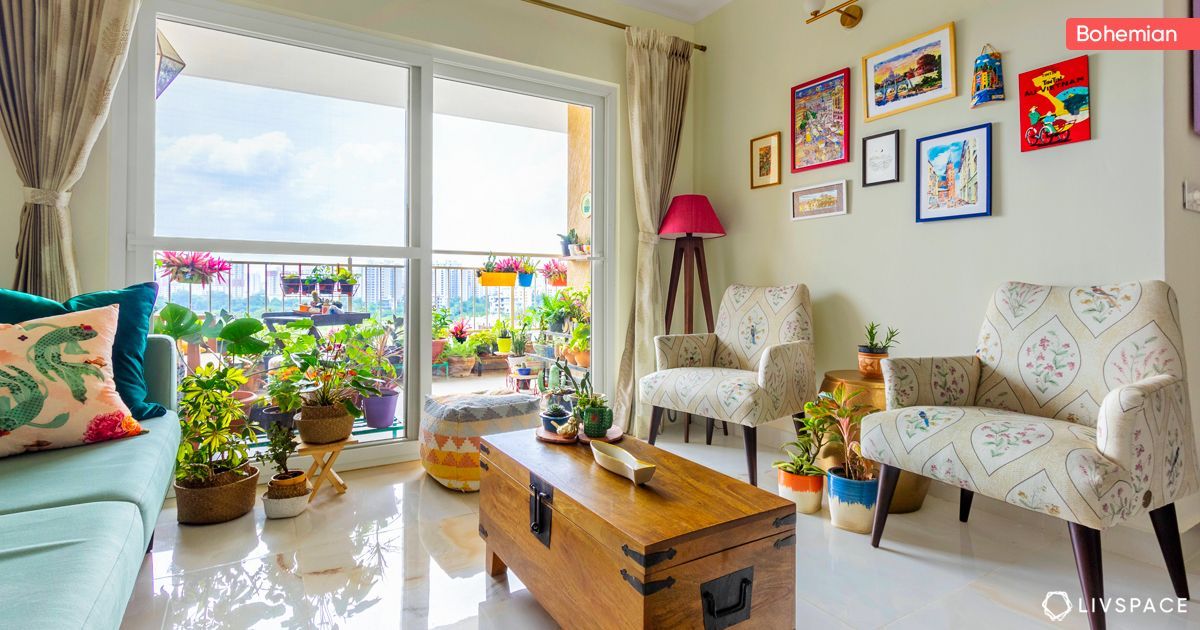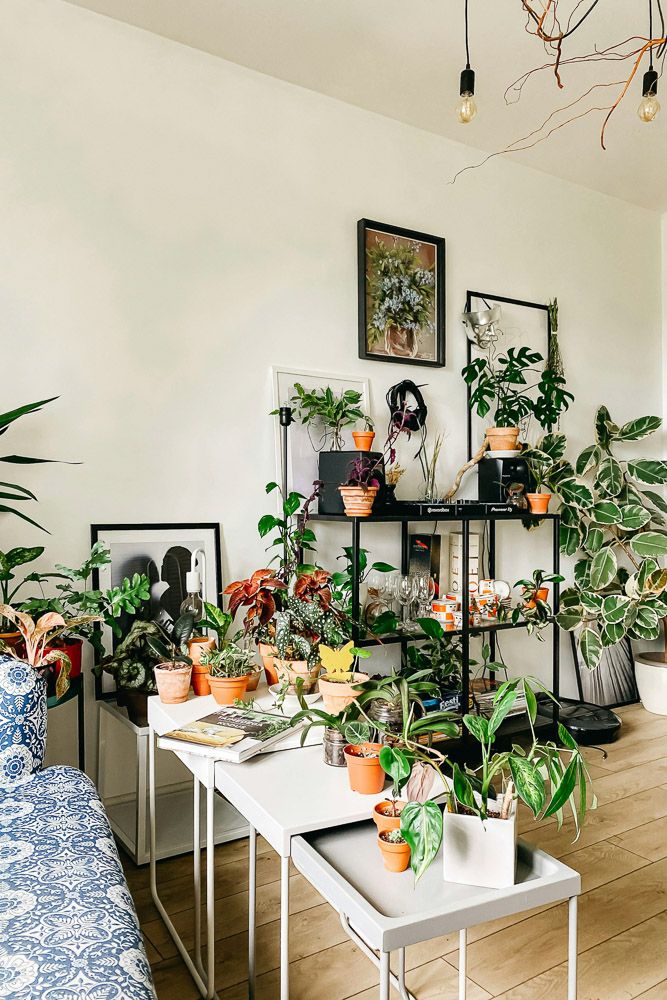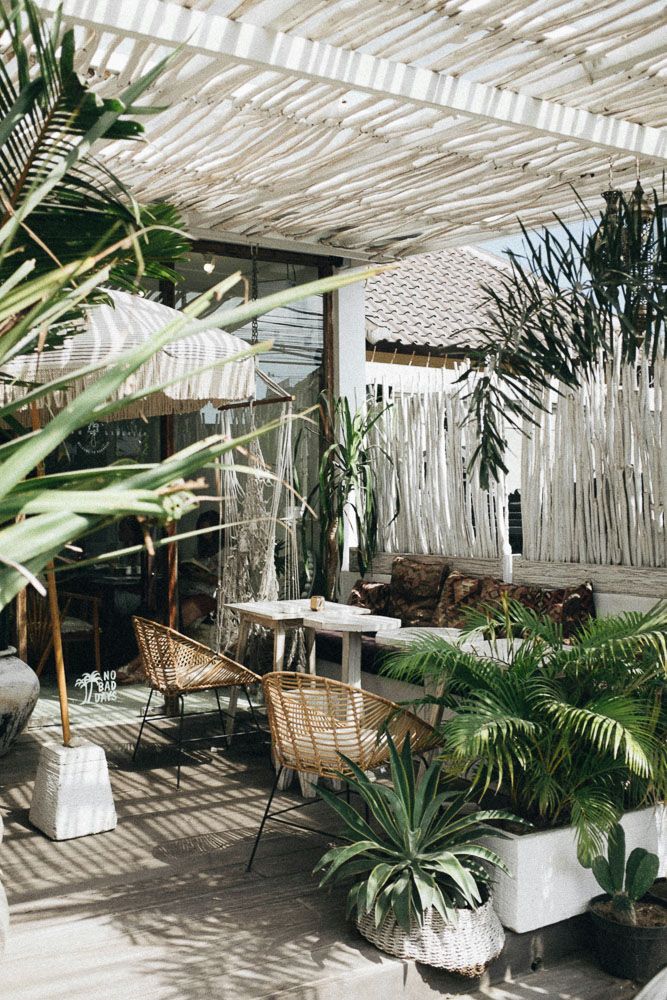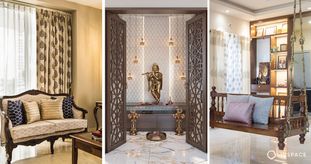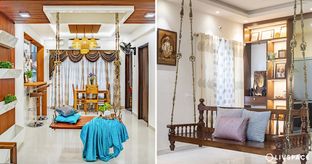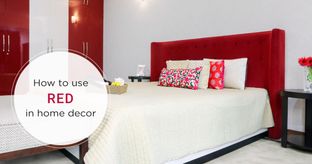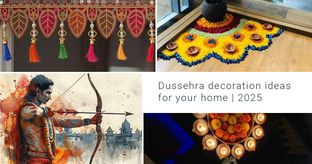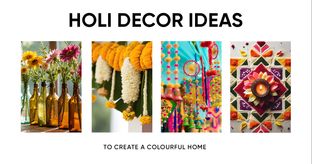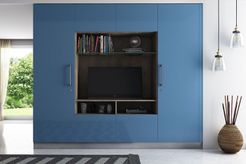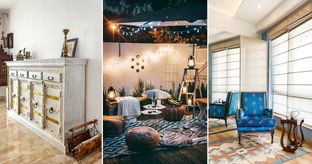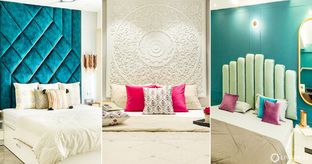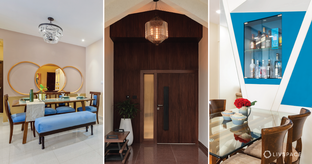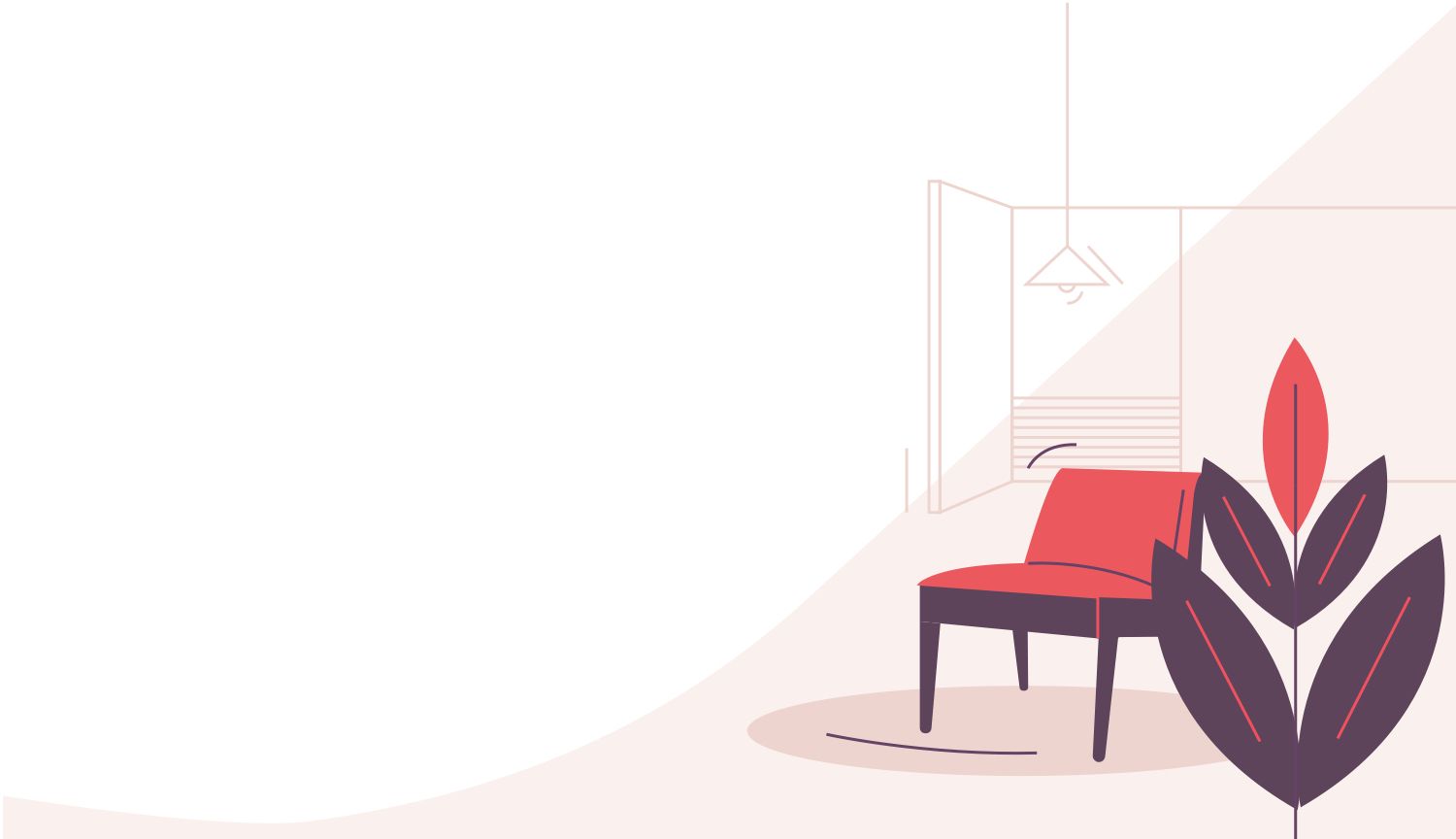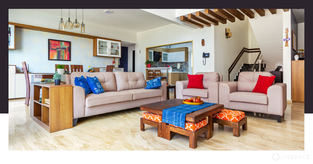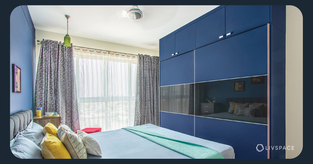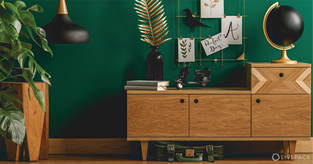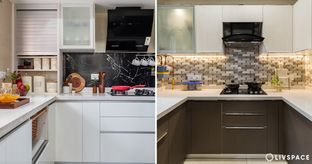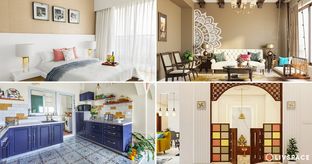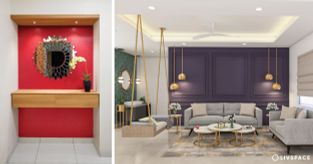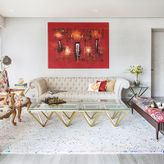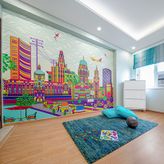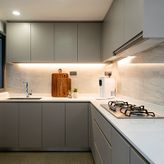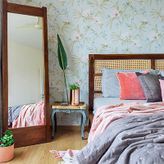In This Article
- Top 5 interior design trends dominating Indian homes in 2025
- Design styles overview: Find your perfect match
- Scandinavian style: The urban minimalist’s dream
- Japandi: Where Zen meets hygge
- Wabi-sabi: Embracing imperfection, Indian style
- Indian traditional: Timeless elegance that never goes out of style
- Contemporary: The modern professional’s smart choice
- Biophilic design: Breathing life into urban spaces
- Mid-century modern: Retro cool meets Indian sensibilities
- Art deco: Glamour with an Indian twist
- Boho/eclectic: Maximalist paradise
- Modern farmhouse: Rustic charm meets Indian comfort
- Châteaucore: French elegance in Indian homes
- Material and colour drenching: Bold statements for 2025
- Grandmacore: Nostalgic comfort for modern times
- Creating your perfect Indian home in 2025
- Final thoughts: Making it uniquely yours
- How can Livspace help you?
Your home should tell your story – not the story of a magazine spread or someone else’s Instagram feed. But with countless design styles floating around social media and an endless stream of “must-have” trends, finding your authentic aesthetic can feel overwhelming. The good news? There’s never been a better time to create spaces that truly reflect who you are, especially when you understand how global design philosophies can work beautifully within Indian contexts.
In the Indian context, “design styles” aren’t just about following global trends blindly. They’re about creating spaces that work with our climate, our families (hello, joint family gatherings!), our festivals, and our daily rhythms. Whether you’re dealing with Delhi’s dust storms, Mumbai’s monsoons, or Bangalore’s pleasant weather, your design choices need to be both beautiful and practical.
From compact 1BHKs in Pune to sprawling independent houses in Gurgaon, each space tells a story. And in 2025, that story is getting more interesting with the rise of hybrid styles, sustainable choices, and a beautiful blend of global aesthetics with Indian sensibilities.
Top 5 interior design trends dominating Indian homes in 2025
| Style | Vibe | Perfect For | Why It’s Trending | Indian Twist |
| Grandmacore | Nostalgic comfort meets modern functionality | Joint families, heritage homes | Post-pandemic craving for comfort and connection | Incorporating traditional brass collections with contemporary furniture |
| Châteaucore | French countryside elegance | Spacious homes, villa owners | Luxury travel inspiration meeting home design | Using Indian textiles with French silhouettes |
| Japandi | Zen minimalism with Scandinavian warmth | Urban apartments, working professionals | Perfect for India’s space constraints + wellness focus | Adding meditation corner elements with traditional elements |
| Material Drenching | Bold, monochromatic statements | Statement rooms, creative professionals | Instagram-worthy spaces that photograph beautifully | Using traditional Indian colours like turmeric, indigo |
| Biophilic Enhanced | Nature integration with smart technology | All home types, especially pollution-heavy cities | Air quality concerns + mental health awareness | Indoor tulsi plants, vertical gardens on balconies |
Fun Fact: The term “Grandmacore” gained 400% more searches in India during 2024, as millennials started inheriting family homes and wanted to honour traditions while modernising spaces!
Design styles overview: Find your perfect match
| Category | Style | Complexity | Best for Indian Homes | Maintenance |
| Minimalist | Scandinavian, Japandi, Contemporary | Low | Mumbai/Pune apartments | Low |
| Traditional | Indian Traditional, Art Deco | Medium | Heritage cities, joint families | Medium |
| Nature-Inspired | Biophilic, Wabi-Sabi | Medium | All cities, especially polluted areas | High |
| Eclectic | Boho, Mid-Century Modern | High | Creative professionals, large spaces | Medium |
| Trending 2025 | Châteaucore, Grandmacore, Material Drenching | High | Statement homes, social media enthusiasts | Variable |
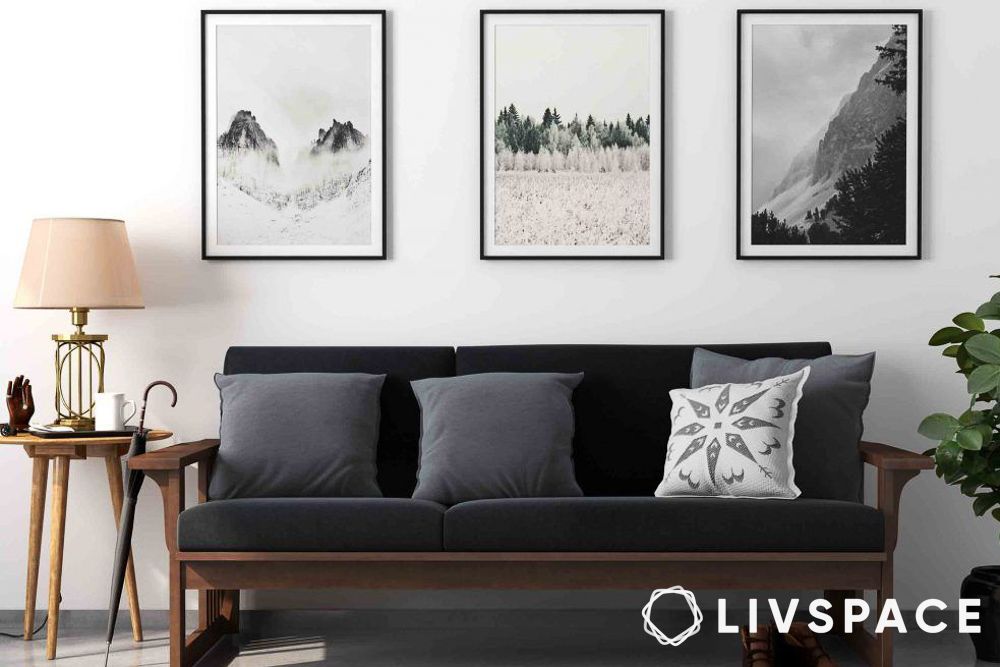
Key characteristics
- Colours: Crisp whites, soft greys, muted blues
- Materials: Light woods (birch, pine), natural textiles, minimal metals
- Layout: Open, uncluttered spaces with multifunctional furniture
Fun Fact: Scandinavian design originated from countries with long, dark winters – making it perfect for Indian homes where we crave light and airiness during humid summers!
The Indian reality
Scandinavian style works beautifully in compact Indian apartments where every square foot matters. Think light oak dining tables that double as workspaces, white walls that reflect precious natural light, and storage ottomans that hide everything from festival decorations to monsoon gear. The magic happens when you add a single statement piece – perhaps a vintage Indian block-printed throw in soft indigo that ties the room together.
This style thrives in urban apartments across Mumbai, Pune, and other space-conscious cities. The clean lines and functional furniture make small spaces feel larger, while the light colour palette helps combat the visual weight that Indian city living can sometimes bring.
Perfect for
- Compact urban apartments and 1-2BHKs
- Working professionals who value clean, organised spaces
- Families transitioning from cluttered to minimalist living
- Anyone dealing with limited storage and wanting to maximise space
Japandi: Where Zen meets hygge
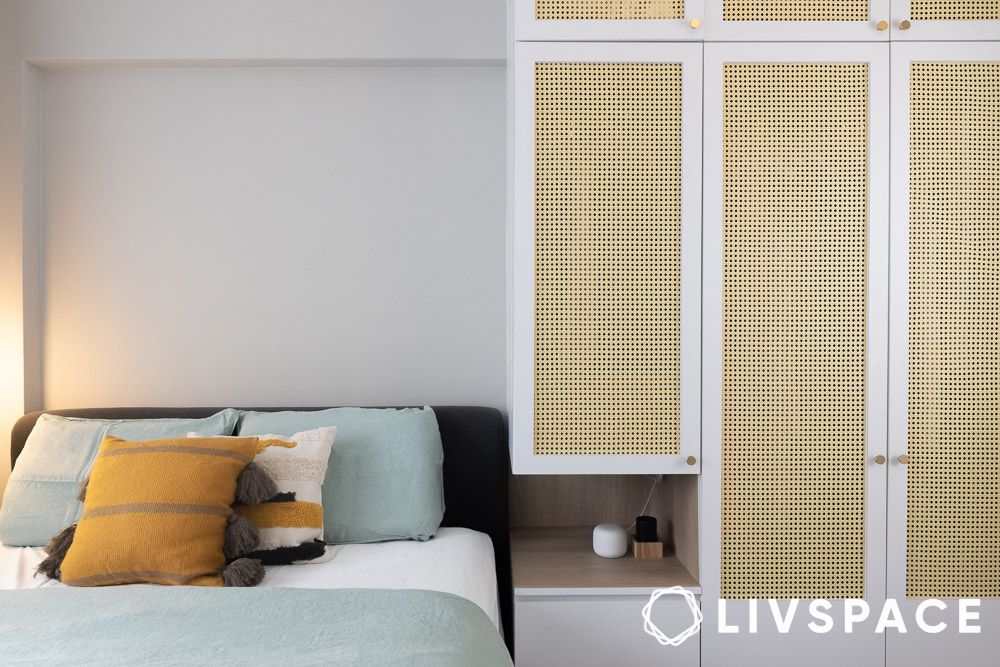
Key characteristics
- Colours: Warm whites, beiges, soft greens, natural wood tones
- Materials: Bamboo, linen, ceramic, natural stone
- Layout: Extremely functional with dedicated meditation/wellness spaces
The Japandi trend perfectly captures the Indian philosophy of “simple living, high thinking” while addressing our modern need for calm in chaotic city life.
The wellness connection
Japandi goes beyond aesthetics – it’s about creating spaces that support mental wellbeing. Picture low-profile furniture perfect for sitting on the floor during festivals, dedicated corners for morning yoga with bamboo screens for privacy, and coffee tables that convert to floor dining setups for traditional meals. The colour palette remains neutral, but carefully chosen brass accents add warmth and connect to Indian heritage.
This style particularly resonates in cities like Bangalore where the pleasant climate makes Japandi’s emphasis on natural ventilation and minimal air conditioning perfect for sustainable living.
Perfect for
- Yoga practitioners and wellness enthusiasts
- Professionals seeking work-life balance
- Homes with good natural light and ventilation
- Families wanting to incorporate traditional floor seating
Wabi-sabi: Embracing imperfection, Indian style
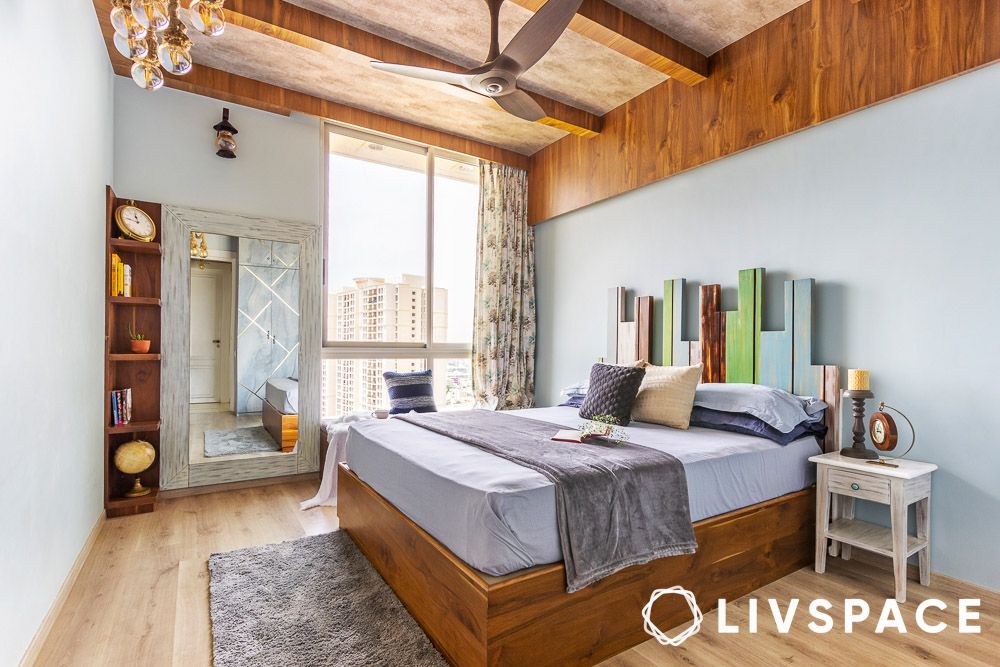
Key characteristics
- Philosophy: Finding beauty in imperfection and impermanence
- Materials: Raw wood, handmade ceramics, aged metals, natural fibres
- Colours: Earthy tones, faded pastels, weathered finishes
Cultural Connection: Wabi-Sabi aligns beautifully with Indian concepts like “antique charm” and our love for handcrafted items with stories.
The art of imperfection
Wabi-Sabi celebrates the beauty in worn surfaces, mismatched vintage furniture from different eras, hand-thrown pottery from local artisans, and walls with deliberate textured finishes that show brush strokes. Imagine dining areas with reclaimed wood tables showing visible grain and knots – imperfections that tell stories and create character.
This philosophy resonates deeply in Indian homes where we’ve always valued the patina of age and the stories behind inherited pieces. It’s about celebrating the crack in the ceramic vase, the fade in the vintage textile, and the weathered surface of grandmother’s wooden chest.
Perfect for
- Heritage homes with existing character
- Families with inherited furniture and artefacts
- Those who appreciate handcrafted, artisanal items
- Creative individuals who see beauty in the unconventional
Indian traditional: Timeless elegance that never goes out of style
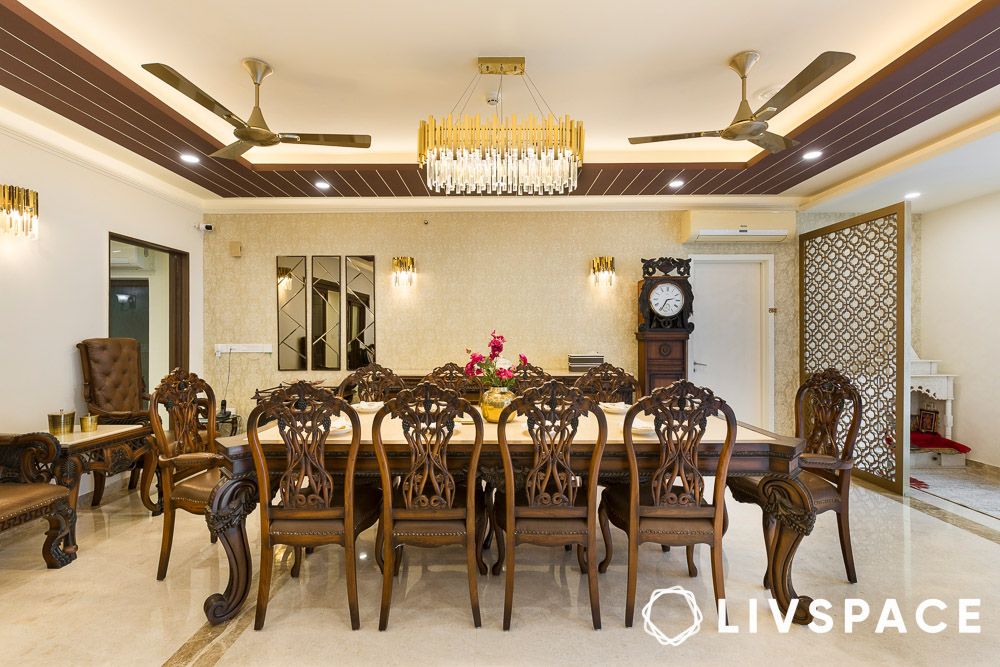
Key characteristics
- Colours: Rich jewel tones, deep reds, royal blues, golden accents
- Materials: Solid wood, brass, copper, handwoven textiles, marble inlays
- Layout: Defined spaces for different functions, emphasis on hosting and gathering
Fun Fact: Traditional Indian design elements like jali work weren’t just decorative – they were early forms of natural air conditioning, perfect for our climate!
Heritage meets modernity
Traditional Indian design beautifully adapts to contemporary living whilst maintaining its cultural essence. Picture living rooms centred around elegant wooden swings (jhulas) that seat multiple family members, brass diyas providing ambient lighting alongside modern fixtures, and family photographs displayed in ornate frames that have been passed down through generations.
The beauty lies in how traditional elements serve dual purposes – storage chests that become seating during gatherings, copper vessels that are both functional and decorative, and rich textiles that add warmth whilst telling stories of regional craftsmanship.
Perfect for
- Joint families who love hosting and gathering
- Heritage homes and older constructions
- Those wanting to honour cultural roots whilst living modern lifestyles
- Families with collections of traditional artefacts and textiles
Contemporary: The modern professional’s smart choice

Key characteristics
- Philosophy: Current trends with timeless functionality
- Materials: Mixed metals, glass, engineered wood, smart textiles
- Technology: Integrated smart home features, hidden tech solutions
Sleek sophistication
Contemporary design captures the essence of modern living with clean lines, neutral palettes, and smart functionality. Think wall-mounted entertainment systems with hidden cables, modular furniture that reconfigures for different occasions, and automated lighting that adjusts throughout the day. The colour schemes remain sophisticated with strategic pops of colour that can evolve with trends.
This style particularly appeals to working professionals in IT hubs who want their homes to reflect their tech-savvy lifestyles whilst maintaining sophistication and comfort.
Perfect for
- Young professionals in tech cities
- New constructions and modern apartment complexes
- Those who love integrating technology into daily living
- Families wanting low-maintenance, high-function spaces
Biophilic design: Breathing life into urban spaces
Key characteristics
- Core Concept: Bringing nature indoors for physical and mental wellbeing
- Elements: Living walls, water features, natural materials, maximum greenery
- Benefits: Improved air quality, reduced stress, better productivity
Health Connection: Studies show biophilic design can reduce stress hormones by 15% – crucial for high-stress Indian urban environments.
Nature as medicine
Biophilic design transforms homes into breathing, living spaces with strategic placement of air-purifying plants, living walls that filter urban pollution, and small water features that create calming soundscapes. The furniture emphasises natural materials like reclaimed wood, bamboo, and stone, creating tactile connections to nature even in urban high-rises.
Work-from-home setups particularly benefit from biophilic elements, with specific plants proven to improve concentration – snake plants for bedrooms, pothos for bathrooms, and peace lilies for living areas.
Perfect for
- Families in pollution-heavy metropolitan areas
- Work-from-home professionals seeking productivity boosts
- Those with health and wellness priorities
- Urban dwellers craving nature connection
Mid-century modern: Retro cool meets Indian sensibilities
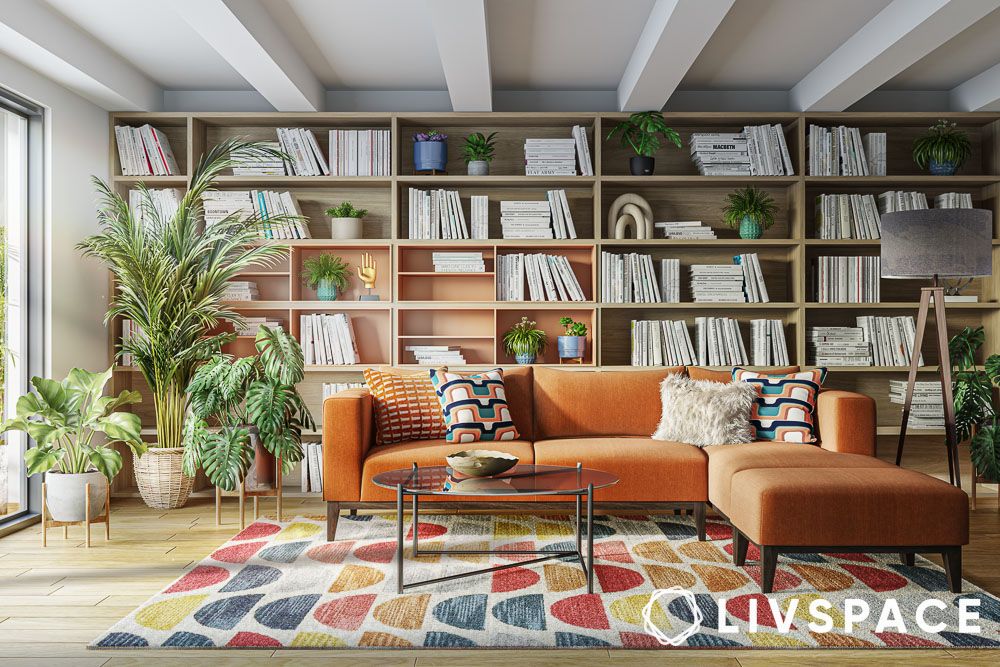
Key characteristics
- Era: 1950s-60s design principles
- Furniture: Clean lines, tapered legs, bold geometric patterns
- Colours: Mustard yellow, teal, orange, walnut wood tones
Bollywood Connection: This style perfectly captures the aesthetic of classic Bollywood films from the 60s and 70s!
Vintage glamour
Mid-century modern brings sophisticated nostalgia through period-appropriate furniture mixed thoughtfully with Indian elements. Picture classic teak sideboards displaying family photographs, geometric-patterned rugs in traditional Indian colours, and pendant lights that evoke the golden age of Indian cinema.
The style celebrates the optimism and forward-thinking design of the mid-20th century whilst honouring Indian craftsmanship and colour preferences. It’s particularly striking when vintage international pieces are paired with Indian textiles and artefacts from the same era.
Perfect for
- Vintage enthusiasts and collectors
- Creative professionals who appreciate design history
- Homes built in the 60s-80s wanting to honour their architectural period
- Those who love mixing international and Indian aesthetics
Art deco: Glamour with an Indian twist
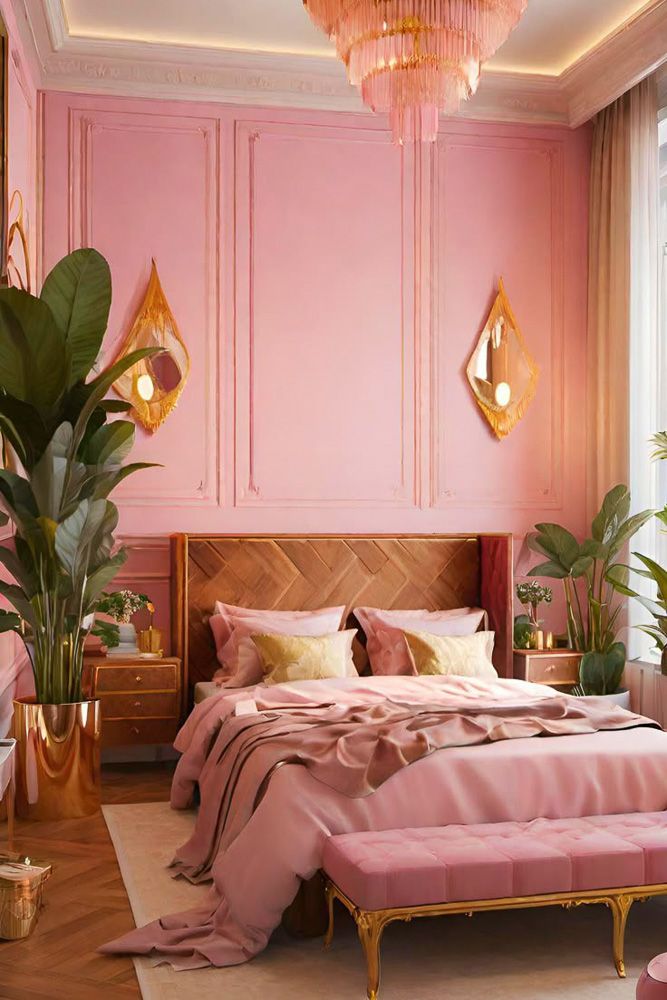
Key characteristics
- Aesthetic: Geometric patterns, metallic accents, bold contrasts
- Colours: Black, gold, deep jewel tones, dramatic lighting
- Patterns: Sunburst motifs, zigzags, stylised florals
Mumbai Heritage: Mumbai has the world’s second-largest collection of Art Deco buildings after Miami – making this style part of the city’s DNA!
Geometric glamour
Art Deco brings drama and sophistication through geometric mirror work, bold black and gold colour schemes, and furniture with clean, angular lines. Modern interpretations include LED strip lighting that highlights architectural details and contemporary art that echoes Art Deco patterns whilst remaining relevant to today’s lifestyle.
The style particularly shines in heritage buildings where original architectural details can be highlighted and celebrated, creating a seamless flow between building and interior design.
Perfect for
- Heritage apartment buildings with original Art Deco features
- Those who love entertaining and making dramatic statements
- Spaces with high ceilings and architectural details
- Design enthusiasts who appreciate geometric patterns and metallic accents
Boho/eclectic: Maximalist paradise

Key characteristics
- Philosophy: More is more – layered textures, patterns, and colours
- Elements: Vintage finds, travel souvenirs, mixed patterns, abundant textiles
- Flexibility: Rules are meant to be broken
Indian Connection: Boho style celebrates the Indian love for colour, pattern, and mixing different cultural elements!
Collected stories
Boho/Eclectic style transforms homes into treasure troves of collected experiences. Imagine living rooms that combine Rajasthani mirror-work wall hangings, Moroccan poufs, vintage Bangalore silk sarees repurposed as curtains, and furniture collected from different cities and travels. Each piece tells a story and contributes to a larger narrative of personal journey and cultural appreciation.
This style thrives on the unexpected – mixing periods, cultures, and price points to create spaces that feel curated over time rather than purchased all at once.
Perfect for
- Creative individuals who love collecting unique pieces
- Well-travelled families with global artefacts
- Large spaces that can handle visual complexity
- Those who prefer personality over perfection
Modern farmhouse: Rustic charm meets Indian comfort
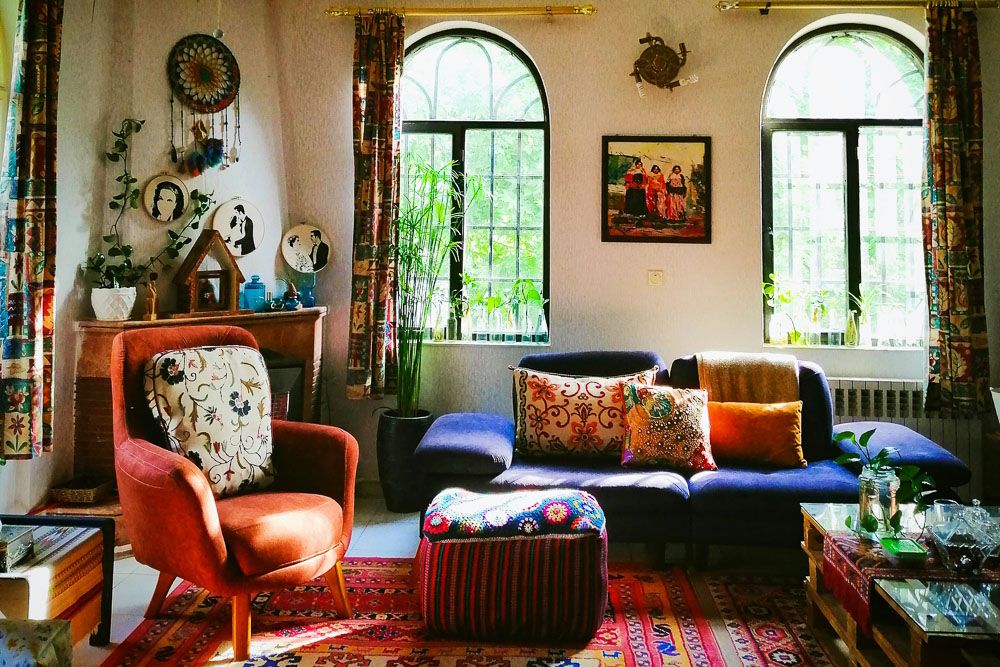
Key characteristics
- Aesthetic: Rustic materials with modern conveniences
- Elements: Exposed beams, shiplap walls, vintage-inspired fixtures
- Comfort: Emphasis on family gathering and casual elegance
Comfortable sophistication
Modern Farmhouse combines rustic charm with contemporary comfort, creating spaces perfect for Indian family life. Picture kitchens where traditional copper vessels are displayed alongside modern appliances, exposed brick walls showcasing contemporary art, and large dining tables that accommodate extended family gatherings during festivals.
The style emphasises comfort and functionality whilst maintaining visual interest through texture, natural materials, and vintage-inspired details that feel both timeless and current.
Perfect for
- Independent houses and villa communities
- Families who frequently host and entertain
- Those wanting rustic charm without sacrificing modern amenities
- Suburban and semi-urban locations with space for larger furniture
Châteaucore: French elegance in Indian homes

Key characteristics
- Inspiration: French countryside châteaux
- Elements: Ornate furniture, vintage textiles, romantic lighting
- Colours: Soft pastels, cream, gold accents
2025 Trend Alert: Châteaucore gained popularity as people sought luxury travel experiences at home post-pandemic!
Romantic sophistication
Châteaucore brings French countryside charm to Indian living through carefully curated vintage elements, ornate lighting fixtures, and the artful mixing of toile patterns with Indian block prints. The style creates dining rooms perfect for elaborate dinner parties featuring both Indian and Continental cuisine, with long tables that encourage lingering conversations.
This emerging trend represents the desire for luxury and romance in everyday living, transforming ordinary meals into special occasions and regular evenings into memorable experiences.
Perfect for
- Luxury homes with high ceilings and architectural details
- Entertaining enthusiasts who love hosting dinner parties
- Those drawn to romantic, European-inspired aesthetics
- Families wanting to create memorable, Instagram-worthy spaces
Material and colour drenching: Bold statements for 2025
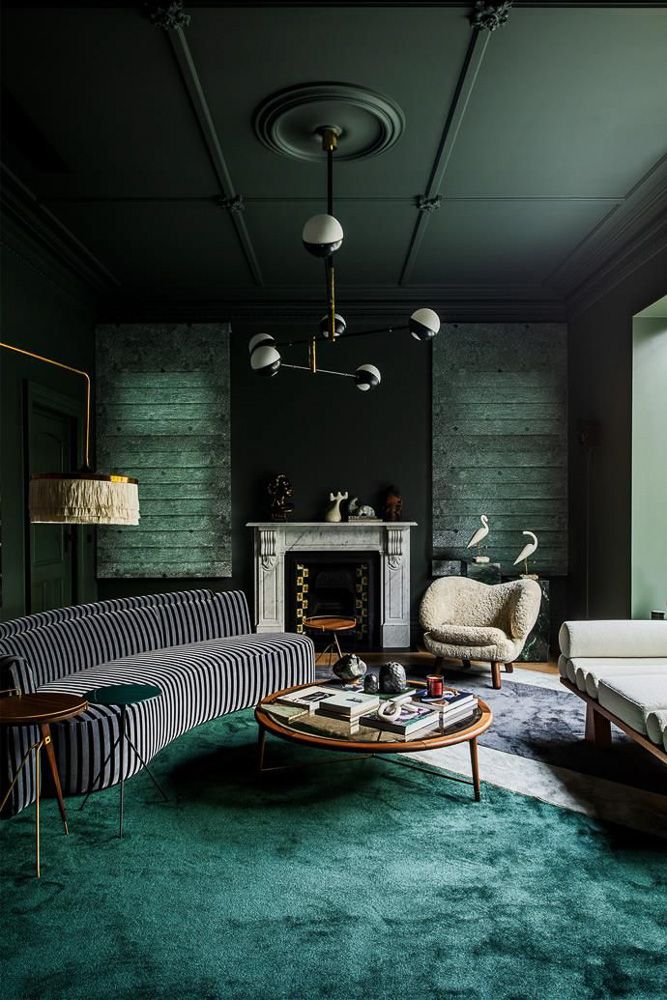
Key characteristics
- Concept: Using a single colour or material in varying shades throughout a space
- Impact: Creates dramatic, Instagram-worthy interiors
- Execution: Requires careful planning to avoid overwhelming the space
Social Media Influence: This trend gained traction as homeowners sought “photo-worthy” spaces for virtual meetings and social media.
Monochromatic drama
Colour drenching creates powerful visual impact through the strategic use of a single colour in multiple textures and shades. Imagine home offices in deep emerald green featuring velvet curtains, glossy painted walls, matte furniture, and coordinating plants. The monochromatic scheme creates an immersive, cocoon-like effect that’s both striking and surprisingly calming.
The key lies in varying textures and finishes within the chosen colour family, creating depth and interest whilst maintaining the bold, unified impact that makes these spaces so photographically compelling.
Perfect for
- Statement rooms and accent spaces
- Creative professionals working from home
- Those wanting Instagram-worthy backgrounds for video calls
- Spaces with excellent natural light to prevent the colour from feeling overwhelming
Grandmacore: Nostalgic comfort for modern times
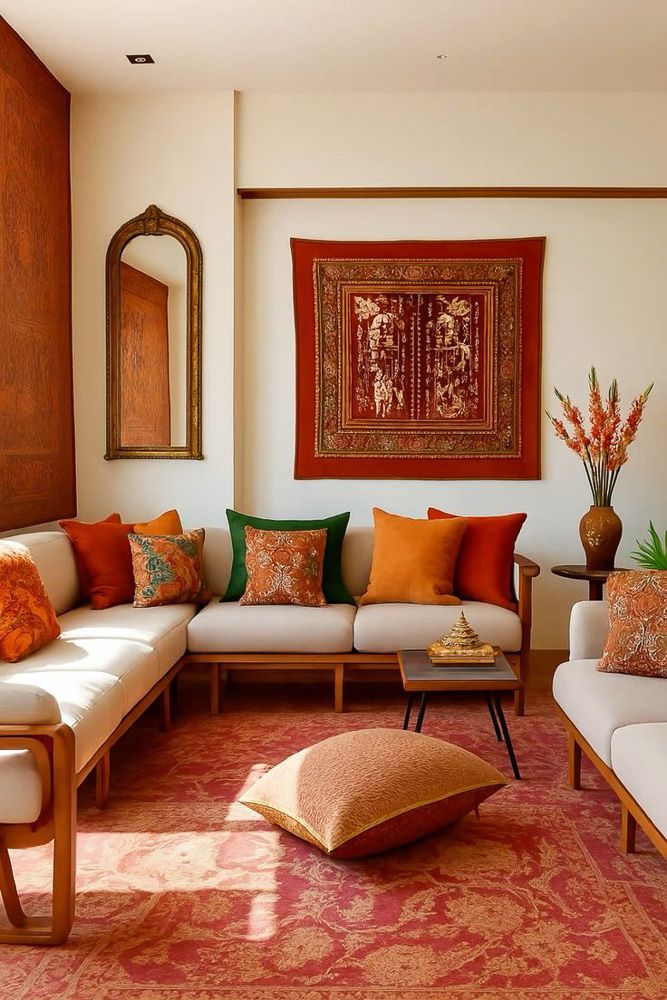
Key characteristics
- Philosophy: Celebrating comfort, tradition, and intergenerational connections
- Elements: Vintage patterns, comfortable seating, family heirlooms, handmade items
- Emotion: Creating spaces that feel like warm hugs
Cultural Relevance: Grandmacore resonates deeply in Indian culture where multi-generational living and respecting elders is traditional.
Inherited beauty
Grandmacore beautifully blends generational heritage with contemporary comfort, creating living spaces that honour family history whilst meeting modern needs. Picture living rooms featuring vintage teakwood bookshelves filled with classic literature, hand-embroidered cushions made by grandmothers, and modern comfortable sofas where families gather for evening tea and conversations.
This style celebrates the emotional value of inherited pieces, the comfort of familiar patterns, and the joy of spaces that feel lived-in and loved. It’s about creating homes that tell family stories across generations.
Perfect for
- Joint families wanting to honour elder generations
- Heritage homes with existing family heirlooms
- Those seeking comfort and emotional connection in their spaces
- Families with rich traditions and cultural artefacts to showcase
Creating your perfect Indian home in 2025
Climate-smart choices
Different Indian cities require different design considerations. Mumbai’s humidity calls for moisture-resistant materials and excellent ventilation, whilst Delhi’s dust demands easy-to-clean surfaces and air purification elements. Bangalore’s pleasant weather allows for indoor-outdoor living concepts, whilst Chennai’s heat requires cooling design strategies and heat-resistant materials.
The art of mixing styles
The most successful Indian homes in 2025 don’t follow just one design style – they thoughtfully blend elements that reflect the family’s lifestyle, heritage, and aspirations. You might combine Japandi’s minimalism with Indian Traditional brass accents, or merge Scandinavian functionality with Grandmacore’s emotional warmth.
Sustainability matters
Today’s design choices increasingly consider environmental impact. Whether you’re choosing energy-efficient lighting, sustainable materials, or locally-sourced textiles, the best design decisions benefit both your family and the planet.
Technology integration
Modern Indian homes seamlessly blend technology with aesthetics. Smart lighting that adjusts throughout the day, hidden charging stations that maintain clean lines, and climate control systems that work with, rather than against, natural ventilation.
Final thoughts: Making it uniquely yours
The beauty of interior design in 2025 isn’t about following trends blindly – it’s about creating spaces that reflect your lifestyle, honour your heritage, and adapt to your city’s unique challenges. Whether you’re drawn to the clean lines of Japandi or the romantic charm of Châteaucore, remember that the best homes are those where you feel completely yourself.
Your 2BHK in Mumbai can be just as stylish as a villa in Goa. Your rented apartment in Pune can reflect your personality as much as your owned home. The key is understanding your space, your needs, and your dreams – then finding the design style that brings them all together.
The most important trend in 2025? Creating homes that make you happy, support your wellbeing, and tell your unique story. Because at the end of the day, great design isn’t about impressing others – it’s about creating spaces where life happens beautifully.
Happy decorating, and remember – in the world of interior design, there are no mistakes, only opportunities for creative solutions!
How can Livspace help you?
Finding the right designs for your dream home is not easy feat. The good news? You don’t have to figure it out alone, and you definitely don’t need to make expensive mistakes that’ll haunt you every time you walk into your home.
Looking for tailor-made costs for your home? Hit our Cost Calculator to jump into your financial planning.
Need inspiration beyond your current Pinterest spiral? Check out Design Ideas for professionally curated looks that actually translate to Indian homes and lifestyles.
Want to see what real people think? Browse through Livspace reviews from customers who’ve survived the renovation process and lived to tell the tale.
Ready to take the next step? Find an interior designer near you and let’s get started.
Disclaimer: All contents of the story are specific to the time of publication. Mentions of costs, budget, materials, finishes, and products from the Livspace catalogue can vary with reference to current rates. Talk to our designer for more details on pricing and availability.
